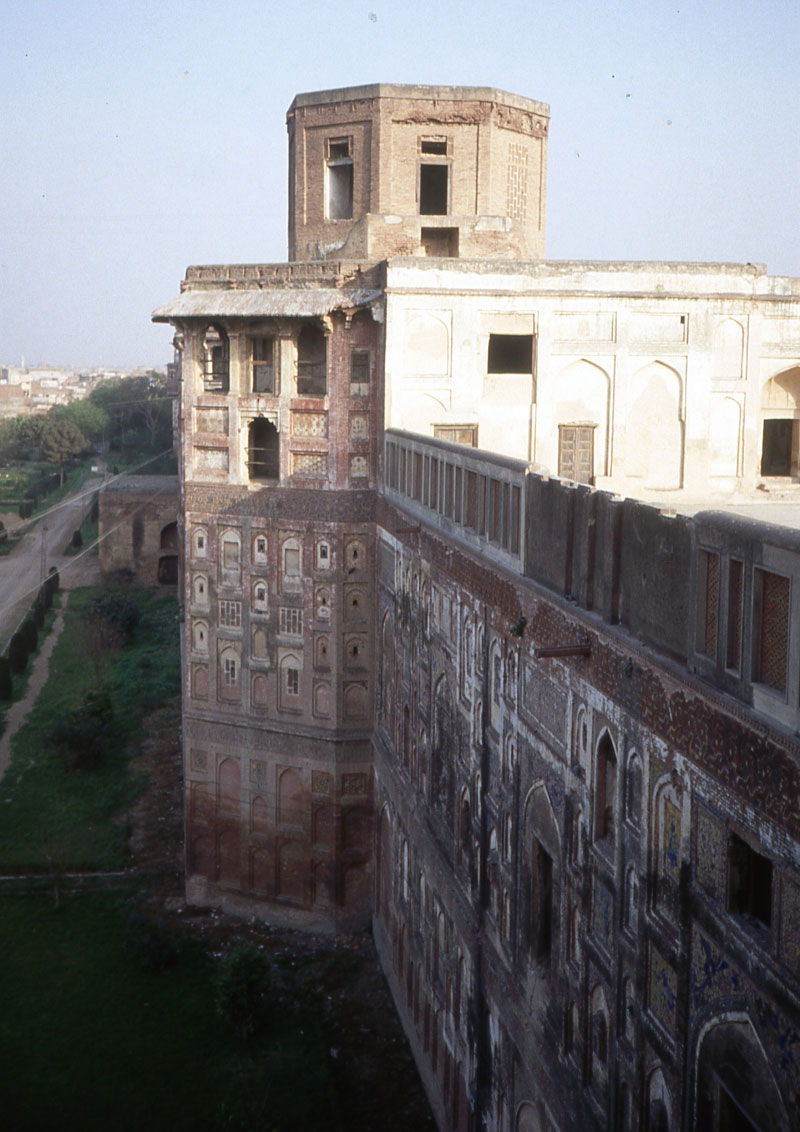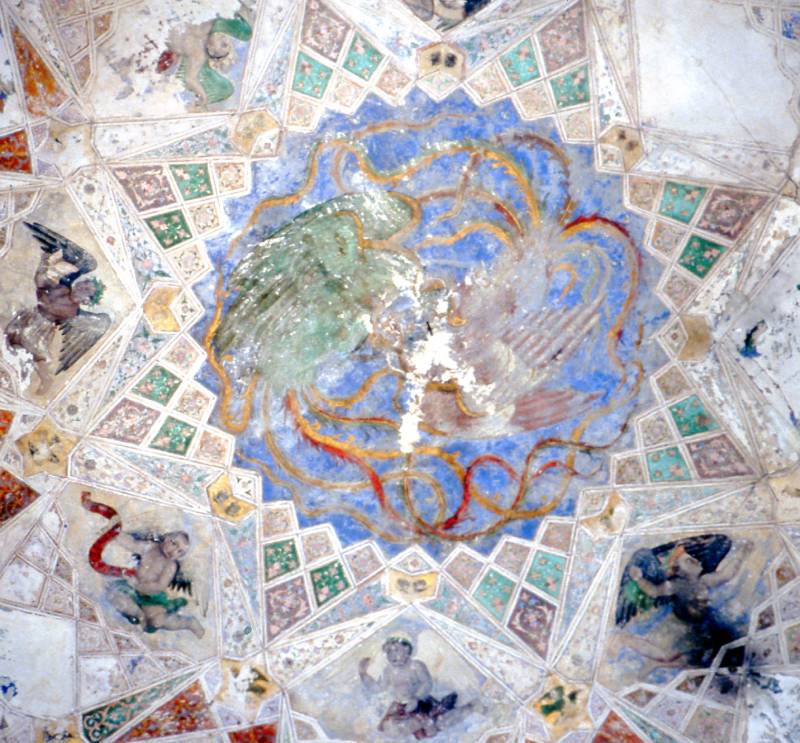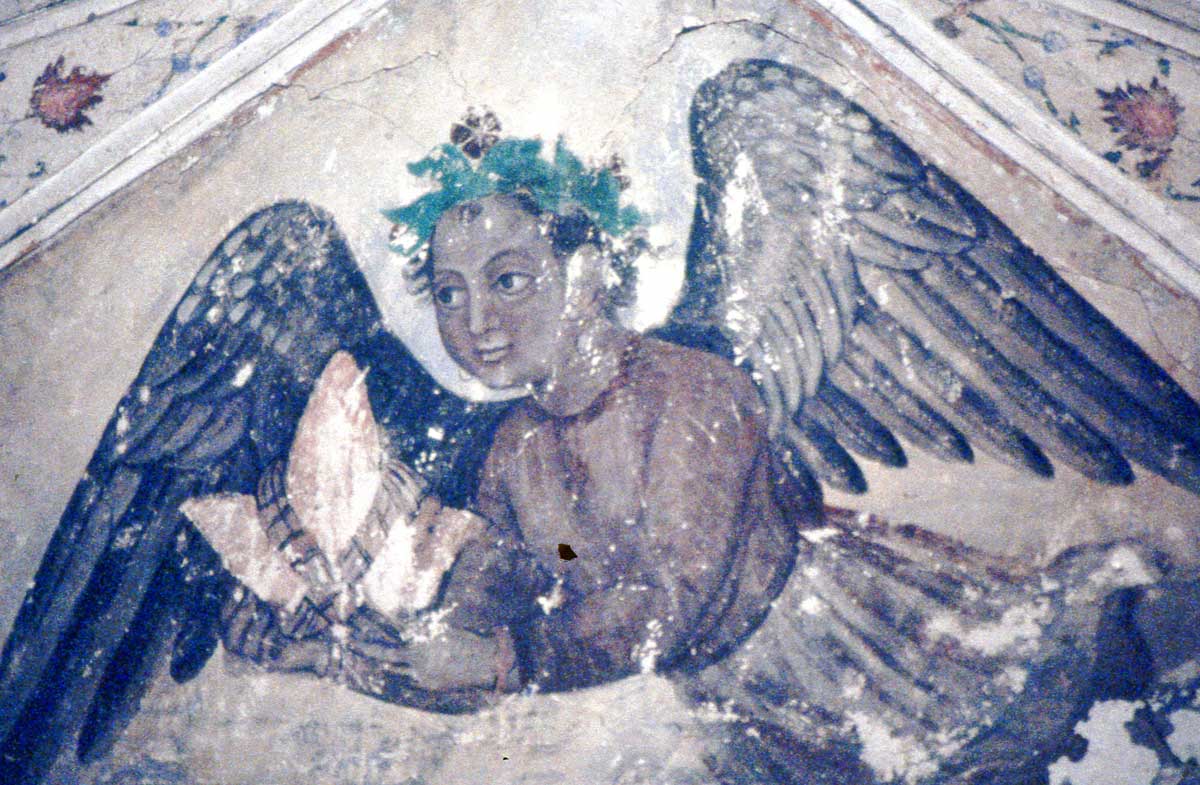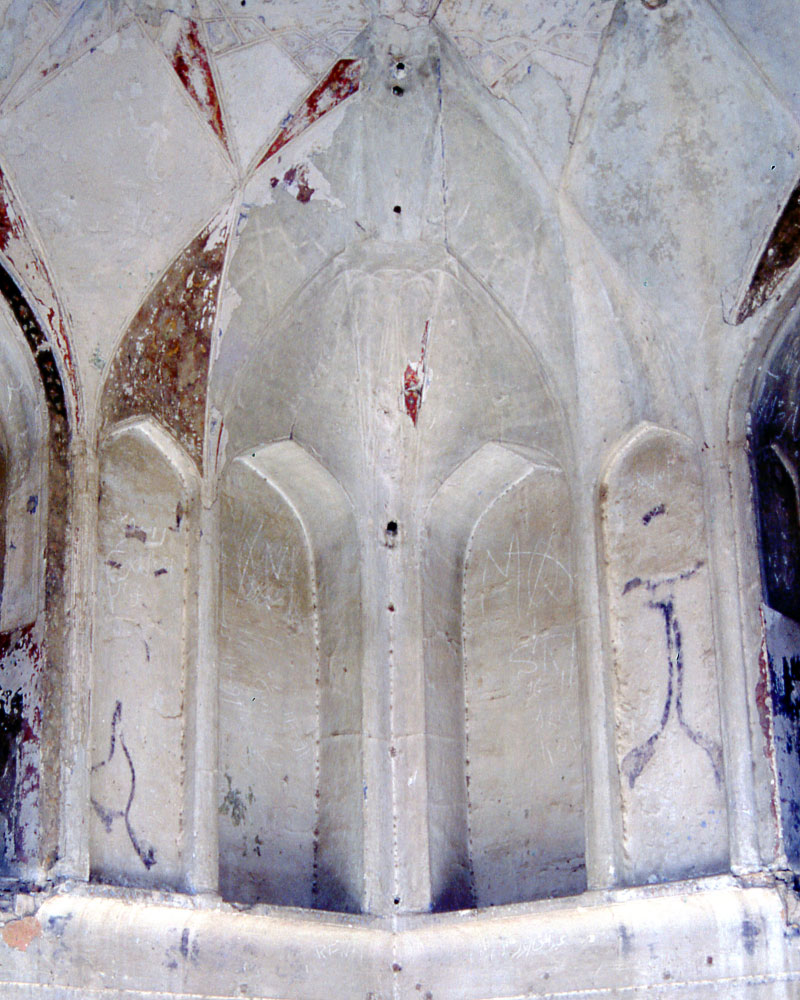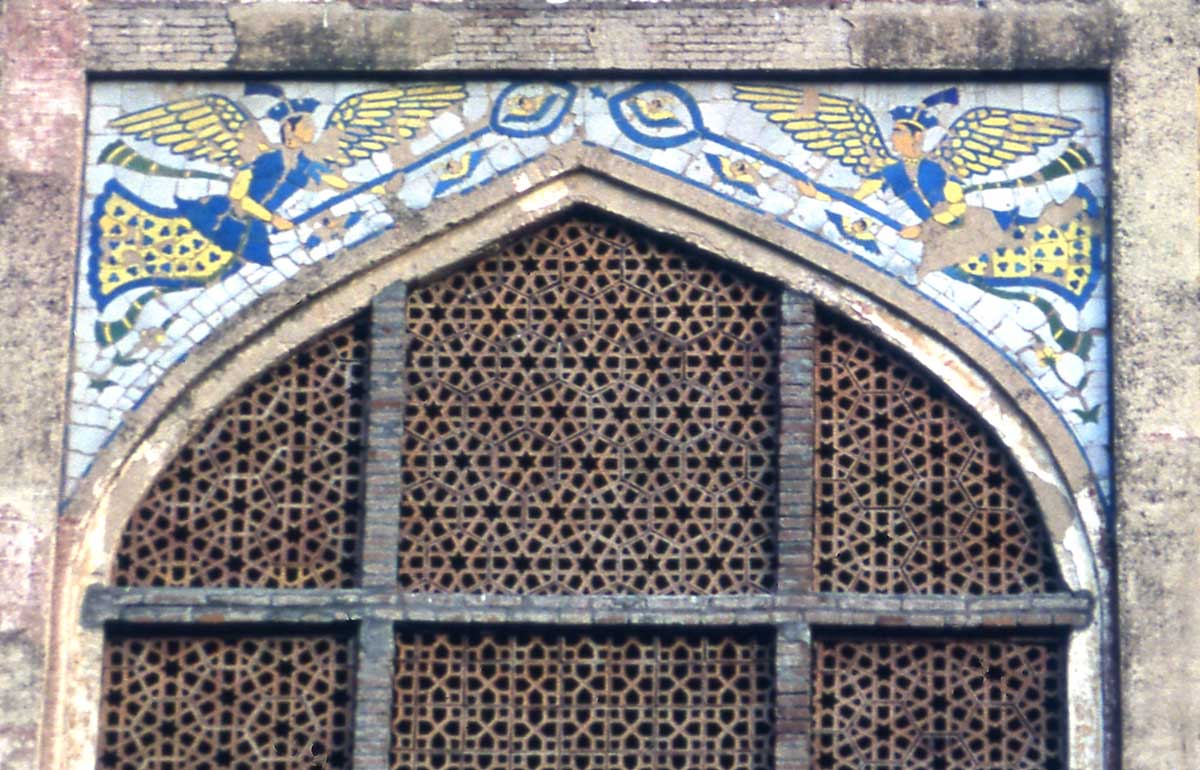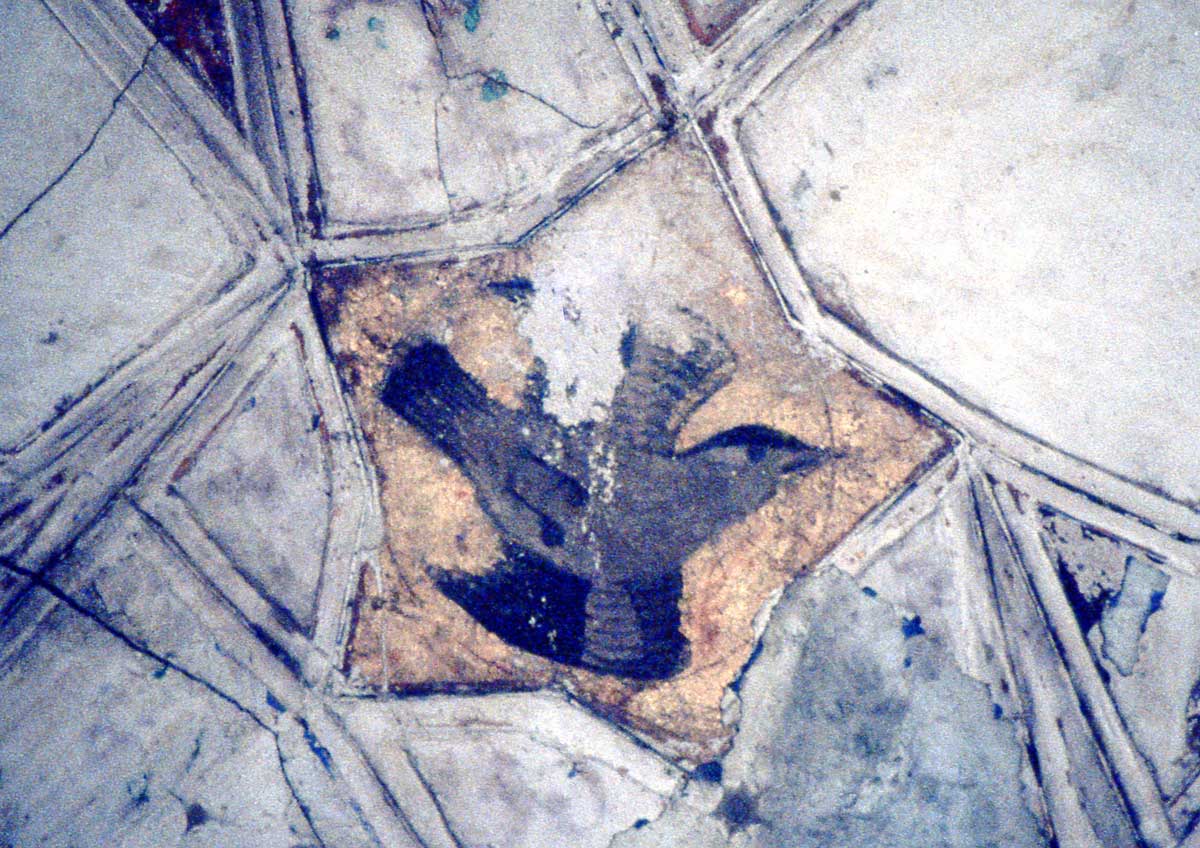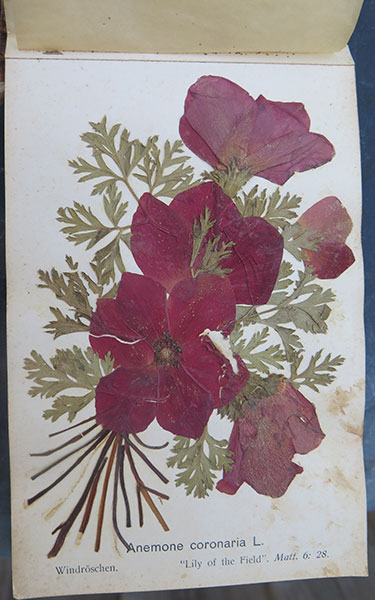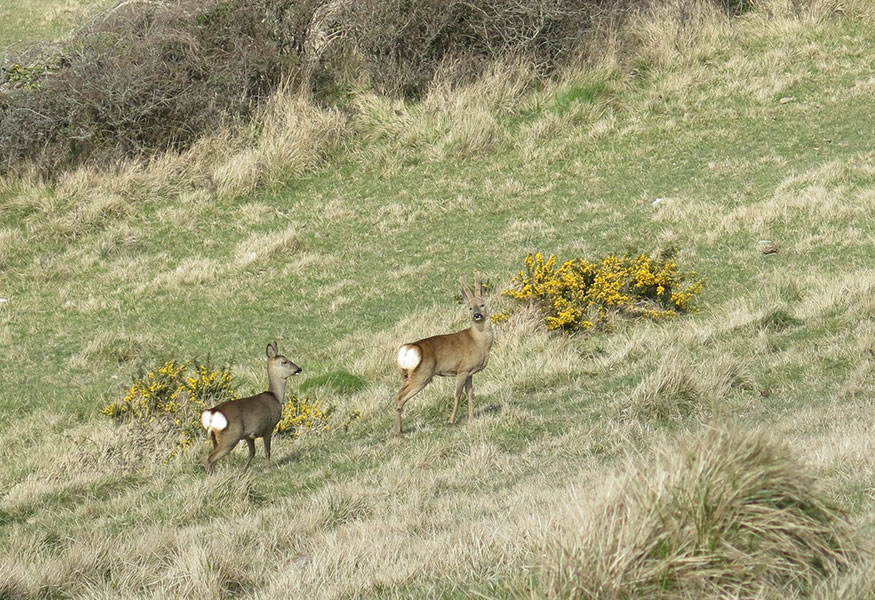48. Lahore’s Colourful Black Bastion
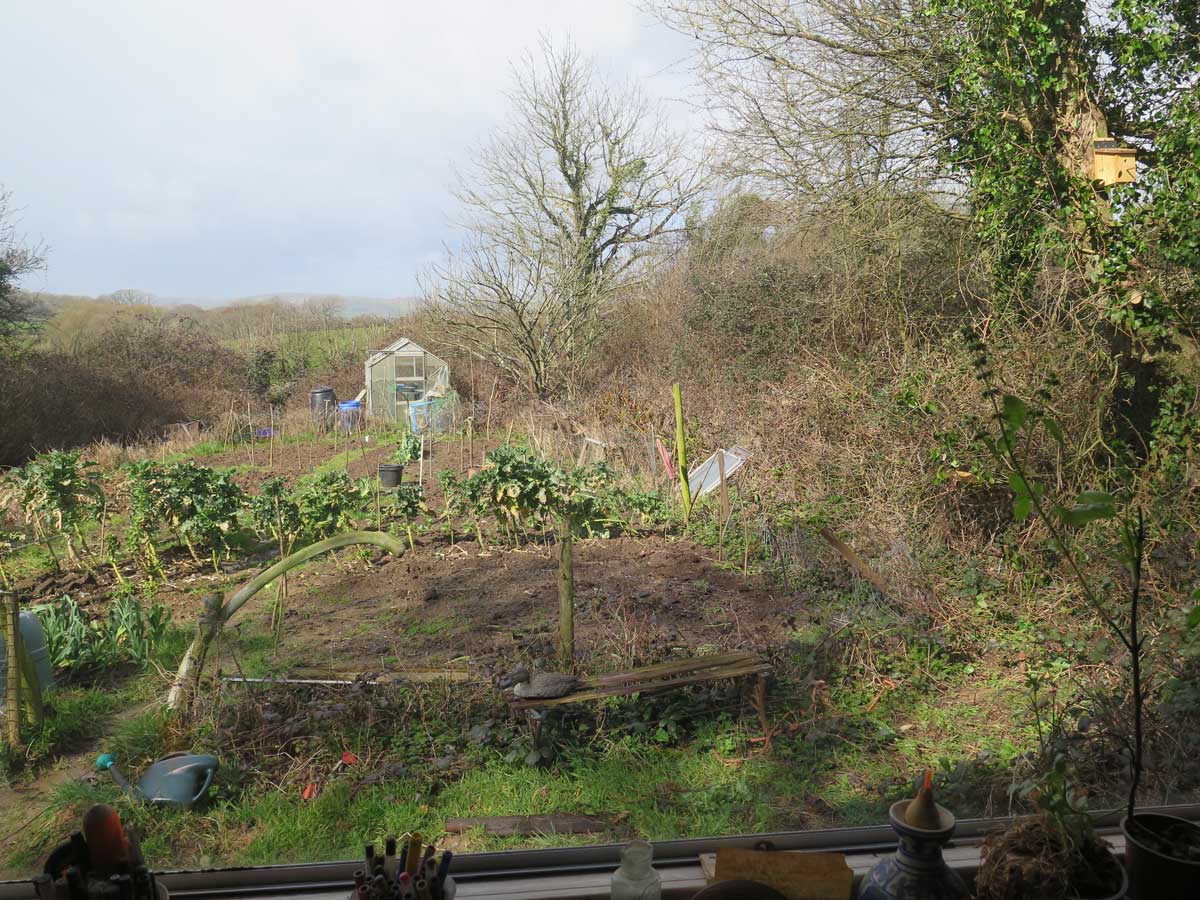
47. The Last Of The Weeklies
March 18, 2021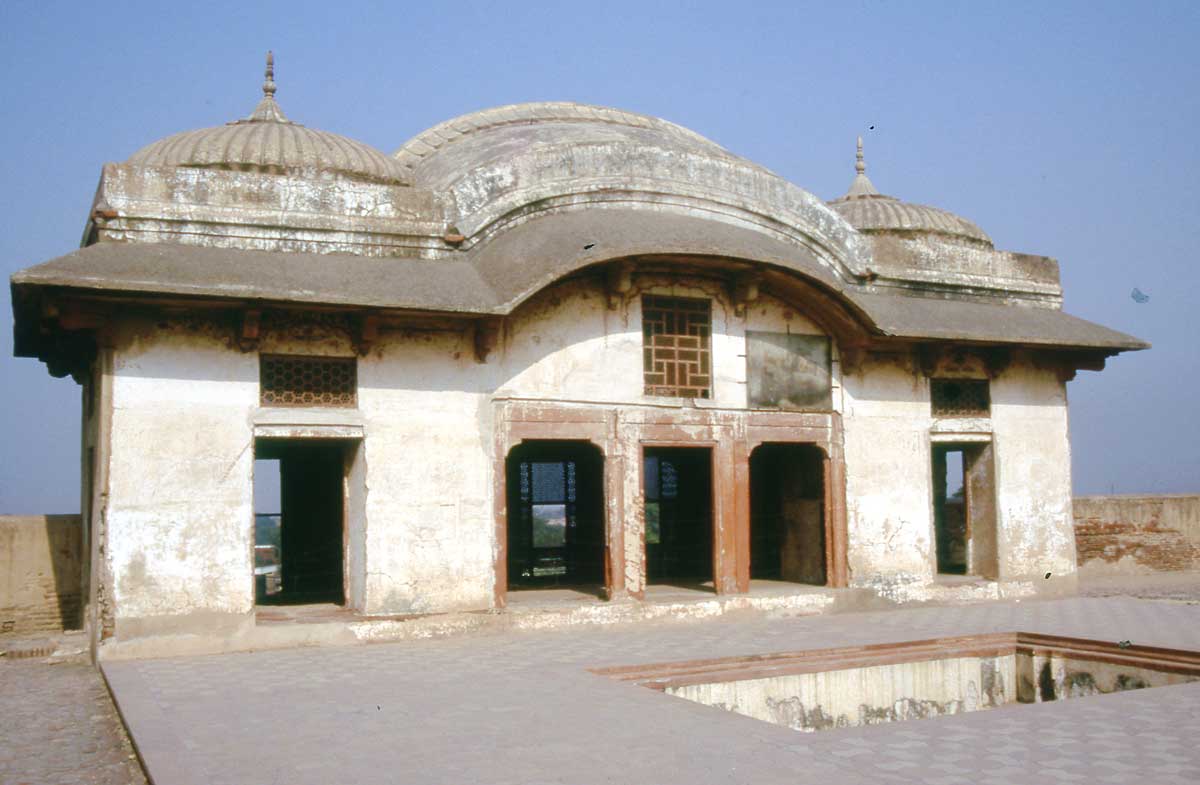
49. The Sedari – An Unbalanced Pavilion
May 6, 2021F lying into Lahore in October 1992 on a Charles Wallace (Pakistan) scholarship expecting little of the country's mural paintings and bearing the prejudices of many years in India, I was soon disabused. Dr Abdul Nabi Khan told me how, in the 1970s, he had noticed colour beneath as whitewash fell away from the dome of Lahore Fort's Kala Burj. A team of craftsmen revealed what was hidden. Ebba Koch's paper (see below) on the murals they uncovered claimed them as Mughal work. The Kala Burj – Black Bastion - projects from the north wall of Lahore Fort as a half octagon. It contains a tall, square domed chamber 6.3 m across surrounded by an arcade on two levels. Around 1620, under the emperor, Jehangir (1605-1627) court painters, were set to decorate the bastion. They were inspired by European, Persian and Chinese art. Later, in his search for celestial favour Aurangzeb (1658-1707) had these paintings obliterated by whitewash thus perversely preserving the subcontinent's best Mughal murals. Uncovered, they face vandalism and decay.
During part of Akbar's reign (1556-1605) and that of his son, Jehangir, Lahore was the Mughal capital. Both men were sufficiently secure to display figurative art in their palaces; they also welcomed people of varying faiths, seeking spiritual answers in all directions. Akbar inherited Persian and Indian court artists and used them as base for an atelier. For him, they illustrated Persian and Hindu epics as well as the embellished history of his dynasty and reign. While retaining spiritual tolerance, Jehangir admired the beauty of the natural world.
The apex disc of Kala Burj's dome frames a swirling battle between two simurghs, one green, the other red, against a blue sky. The simurgh, a fierce Chinese mythical bird associated with royalty, reached India via Persia. Each has the characteristic jagged, meandering tail plumes and a hooked beak, all in yellow-gold, of their breed. Otherwise, the dome's surface is divided by qalib kari into radiating kite- and fan-shapes, each framing paintings. The simurghs' disc becomes a star, its eight points divided to contain leaf motifs. The angles between points fan out into the largest frames, each holding a lightly-clad cherub or robed angel flown in perhaps via Antwerp prints in Jesuit prayer books or with Persian miniatures. Some angel faces resemble portraits; a painter's beloved child, perhaps? Only one space is blank.
Clockwise from the blankness are 1) The wreckage of a hat and green clothing; 2) A cherub of doubtful nationality, right arm raised. Two green wings rise behind his gold-crowned head but clothing is obscured by cloudy black discoloration. 3) A bare-chested cherub with white hat and wings examines something in his right hand. 4) This cherub is an unalloyed European infant. With dark-pinioned light wings, a loose green cloth preserving his modesty, in both hands he holds an open scroll bearing Persian writing said to be meaningless. 5) Is there a laurel wreath on this grey-winged cherub carrying a regal turban? 6) A green-winged, bare-chested cherub with a yellow turban or crown has lost his lower half. 7) A defaced, grey-winged cherub in a green lunghi. 8) All is white.
Clockwise from the blankness are 1) The wreckage of a hat and green clothing; 2) A cherub of doubtful nationality, right arm raised. Two green wings rise behind his gold-crowned head but clothing is obscured by cloudy black discoloration. 3) A bare-chested cherub with white hat and wings examines something in his right hand. 4) This cherub is an unalloyed European infant. With dark-pinioned light wings, a loose green cloth preserving his modesty, in both hands he holds an open scroll bearing Persian writing said to be meaningless. 5) Is there a laurel wreath on this grey-winged cherub carrying a regal turban? 6) A green-winged, bare-chested cherub with a yellow turban or crown has lost his lower half. 7) A defaced, grey-winged cherub in a green lunghi. 8) All is white.
Between panels a golden five-point star frames a flying bird. Two kite-shapes descend from each star to another pair of stars in a circle of sixteen. Another sixteen below these make a total of forty star-panels all once holding a bird. Copied for a naturalist emperor, some still identifiable, positioned in a faintly incised compass arc. They are correctly portrayed save for one feature: when the bird's breast faces us its legs are visible. Few birds fly with the undercarriage down...but a dead bird on its back sticks its legs up. The painters were copying corpses then inverting them onto the wall. The world doesn't work like that!
I should love the opportunity to examine these birds from scaffolding. Even then many would be indistinct. All once conveyed a real individual carefully copied from a sad corpse. From ground level with binoculars one can make out a pied mynah, a green and red coppersmith, some other barbet, a babbler, a dove, a pigeon, perhaps a snipe, a bulbul, a hoopoe, a tree-pie, a pied kingfisher and, most clearly, a Brahminy mynah.
There are more cherubs and angels, too. A tier of sixteen panels comes immediately below the first eight the celestials in most barely visible. Beneath the foreign cupid 5 three survive, that at the centre being a winged head. Another winged head remains beneath angel 7 and next to him is an older boy in a red cap holding up a glass and trailing a whisk.
Helen Howard at the Courtauld in London identified the principal pigments used in these paintings as green copper chloride or acetate, red lead overlain by vermilion and smalt - ground cobalt glass. The colourful dome sinks into white lime but pointed kites run down to tall, arched recessed panels beside each opening into the chamber. They remain whitewashed but in seven of those eight panels dark traces intrude through the lime as shadows of angels. There is no hint of flesh, only of clothing but this relates them directly to tilework angels on the fort's outer walls. It is twenty years since I was in Lahore. Then, none of those shadows had been explored so my interpretation of how those shadows were formed is merely conjecture. One pigment, vermilion overlying red lead, blackens spectacularly throughout the Kala Burj when exposed to air rich in sulphurous traffic exhaust. Beneath the covering lime it remains scarlet. The shadow darkness is something else. In other Mughal buildings gum was used to stick gilded decoration to a lime surface. Decaying, this gum blackens; this probably caused the shadows which reveal caps, sashes, decorated sleeves of angels unseen for four hundred years.
Birds aren't limited to the Kala Burj's dome. They are ubiquitous, flitting in full view and stalking beneath whitewash throughout the building. They have been uncovered flying along lintels or creeping through the painted vegetation of jambs in the octagonal arcade. Although some relate to real species such as tree pies and cuckoo shrikes they are not so precisely depicted as those of the dome. The rest await their time. Perhaps those Aurangzeb so presciently covered will remain preserved for a few more centuries and emerge to a later, wiser world.
*
Cooper, I., 1993 Sikhs, Saints and Shadows of Angels: Some Mughal Murals in Buildings along the North Wall of Lahore Fort in South Asian Studies Vol 9, London 1993 South Asian Studies Koch, E., 1983 Jehangir and the Angels, India and the West, Proceedings of a Seminar Dedicated to the Memory of Hermann Goetz, Joachim Deppart, ed, South Asian Studies XV, New Delhi.

